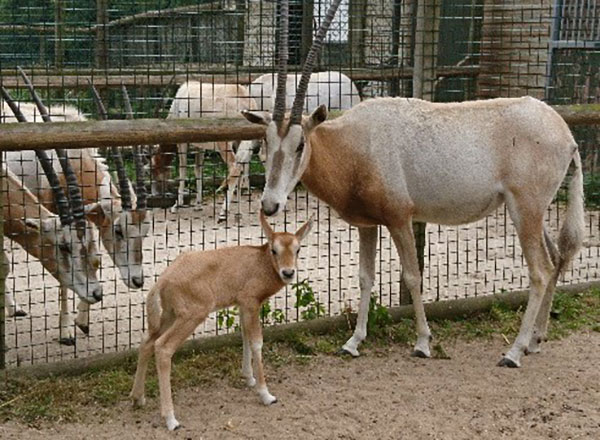Tunisian Unicorns!

On Monday night, 18 million viewers tuned into their television sets to watch England take on Tunisia in their World Cup opener. For 90 minutes, the country of Tunisia was at the forefront of our minds, but by now it has probably already drifted off somewhere into our subconscious only to spring to mind next time we try to book a holiday.
But Tunisia also happens to be part of the former range of one of Flamingo land’s most significant animals. The Scimitar-horned Oryx, a white antelope with a reddish brown chest, is believed to have given rise to the myth of the Unicorn. Once widespread across northern Africa, the Oryx inhabited the dry, arid lands bordering the Sahara desert. It’s pale coat helps to reflect heat and its unusual biology allows it to tolerate high temperatures whilst needing very little water. Nevertheless, climate change initiated the decline in Oryx numbers and hunting for meat and horns finished the job. In 2000, the Scimitar-horned Oryx was officially classified as extinct in the wild!
But, despite these animals being wiped out in the wild, there were still some in captivity. Flamingo land joined up with zoo’s across the world to breed this critically endangered creature and some ambitious programmes were initiated to reintroduce the Scimitar-horned Oryx back to the wild. There are now around 250 Oryx roaming free within protected areas of Tunisia and similar ongoing projects in Morocco and Senegal. More recently, a project in Chad saw the release of 21 animals into a reserve the size of Scotland and in 2017, the first wild calf was born in over 20 years.
And here at Flamingo land we are having similar success. We have just welcomed the birth of another calf. Born on the 16th June to Mum, Hyacinth, this young male is doing very well and can now be seen with the rest of the herd. So, whilst we may not have Unicorns, we do have an animal that was, not so long ago, just as rare in the wild


